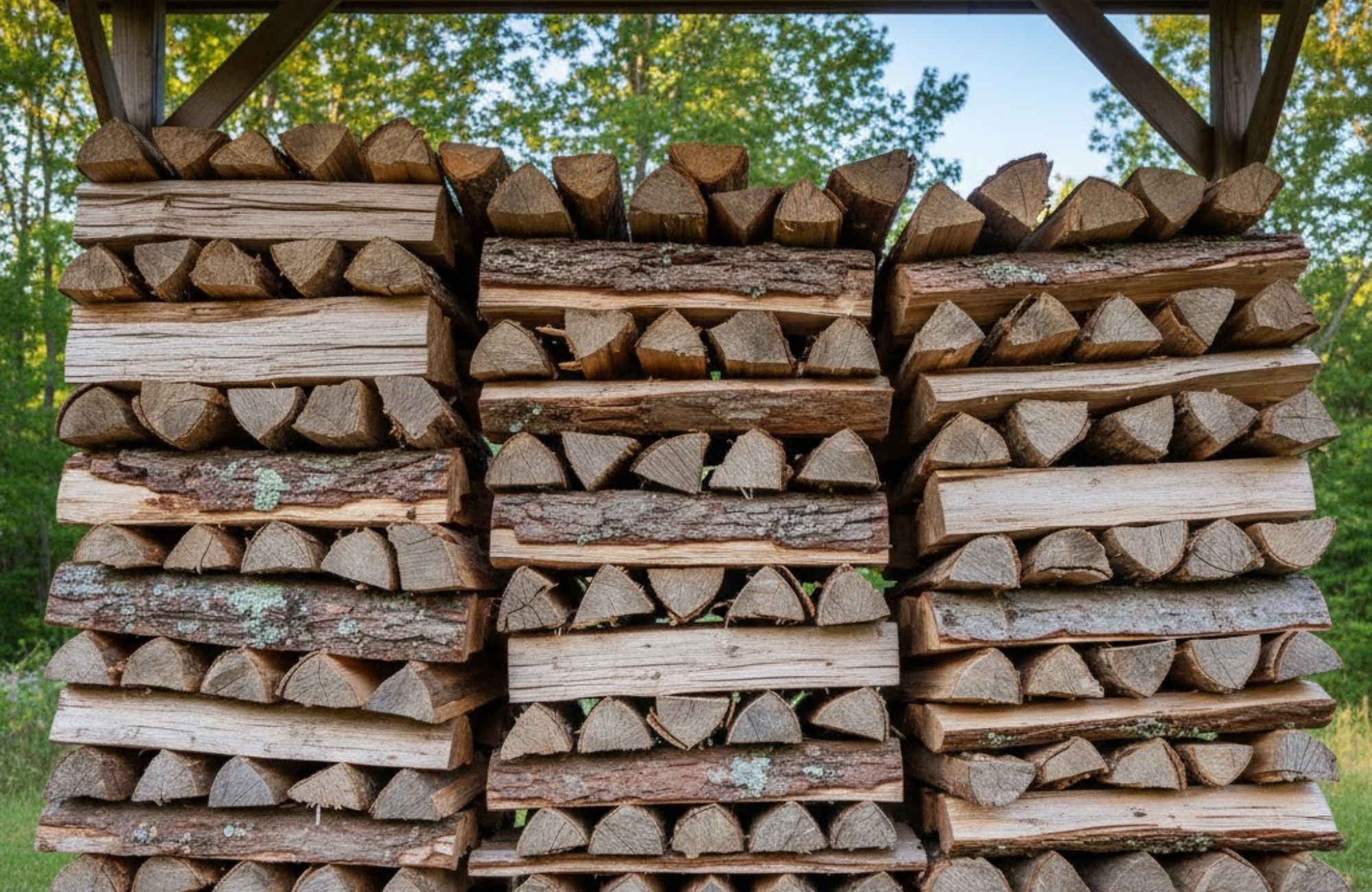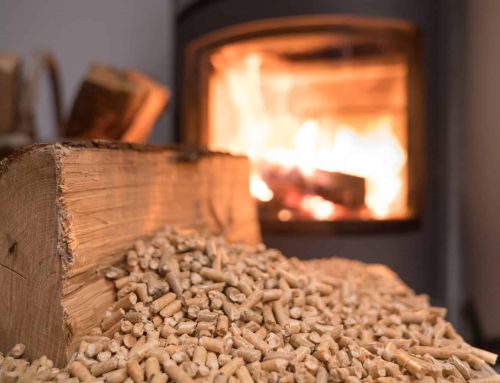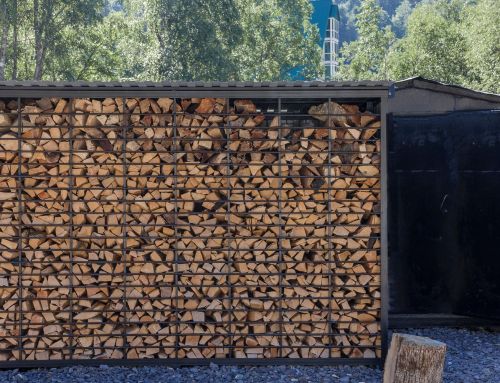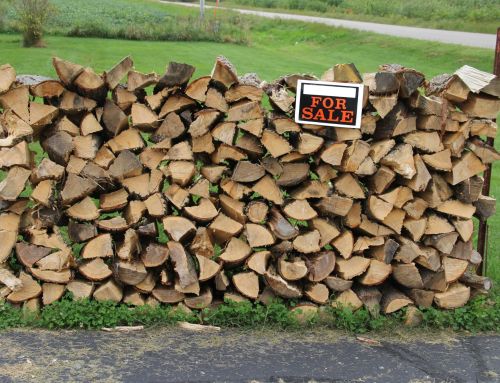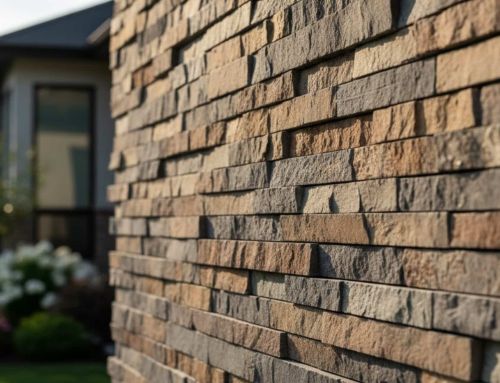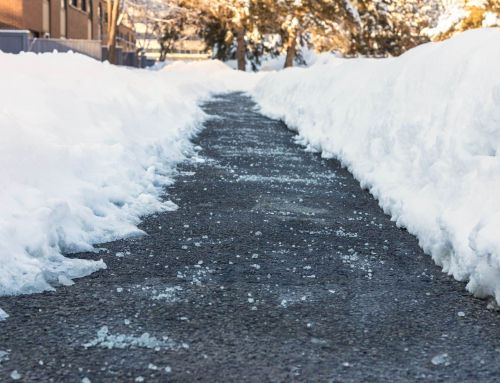When it comes to heating your home efficiently, seasoned firewood makes all the difference. Unlike freshly cut or green wood, it has been carefully dried to remove excess moisture. This drying allows it to burn hotter, cleaner, and longer with minimal smoke. It also reduces creosote buildup in your chimney, keeping your fireplace or stove safer. Whether you’re preparing for winter or enjoy cozy fires, fall is the perfect time to stock up on seasoned firewood.
At Old Station Outdoor & Landscape Supply, we believe true quality starts with authenticity and care. We proudly serve our country and provide American-sourced firewood products. Many homeowners don’t realize how much moisture impacts burn quality and home air safety. That’s why we only supply properly seasoned and kiln-dried firewood. Every log we deliver burns evenly, produces steady heat, and keeps your home warm throughout the cold months.
What Is Seasoned Firewood?
When you hear the term seasoned firewood, it refers to wood that has been cut, split, and properly dried over time. This drying process removes internal moisture, making the wood easier to ignite and allowing it to burn hotter and cleaner. Seasoned firewood is made from various tree species, each offering unique aromas and burning characteristics. In contrast, green wood contains over 50% moisture, making it harder to light and more likely to produce smoke and creosote. Properly seasoned firewood usually has a moisture content between 15–20%. At Old Station Outdoor & Landscape Supply, we focus on providing properly dried, high-quality firewood that delivers consistent warmth and efficiency.
Types of Firewood
Choosing the right firewood is key to achieving a warm, efficient, and enjoyable fireside experience. Firewood comes in three main types: green, seasoned, and kiln-dried, each affecting how the wood burns and how much smoke it produces. Green wood, or wet wood, is freshly cut and high in moisture, making it difficult to light, smoky, and less efficient. Seasoned firewood is naturally dried for at least six months, reducing moisture for a cleaner, hotter burn. However, quality varies depending on how it’s stored and dried.
For the best results, many homeowners choose premium kiln-dried firewood, which is heat-dried in a controlled environment until its moisture content falls below 20%. This ensures a consistent, ready-to-burn log that produces minimal smoke and no mold or fungus. The type of wood also matters; dense hardwoods like oak, maple, and cherry provide longer, steadier heat. By considering both the drying process and the wood species, you’ll enjoy a cleaner, hotter, and more reliable fire all winter long.
Why Does Seasoning Matter?
Using seasoned firewood instead of green or wet wood isn’t just a matter of preference. It’s essential for efficiency, safety, and comfort. When firewood is properly seasoned, it burns at a higher temperature and releases fewer pollutants. This means less smoke, less creosote, and a cleaner fireside experience.
Burning unseasoned or damp wood can lead to:
- More smoke and visible soot in your fireplace or stove.
- Increased creosote buildup, a tar-like residue that can become a serious chimney fire hazard.
- Reduced heat output, since energy is wasted boiling off water instead of producing warmth.
Seasoned firewood also produces a more consistent and efficient burn. It’s a simple way to save money on home heating while maintaining a cleaner burn and extending the life of your fireplace or stove. With properly seasoned firewood, you don’t have to worry about excess moisture, pests, or inefficient burning.
How Long Does It Take to Season Firewood?
The seasoning process can take anywhere from six months to two years, depending on the type of wood, climate, and how it’s stored. A long period is essential to ensure the wood is properly seasoned and ready to burn. Hardwoods like oak and hickory are denser and retain more moisture. They require a longer drying period, while softwoods like pine or spruce dry faster but burn more quickly.
| Wood Type | Average Seasoning Time | Notes |
|---|---|---|
| Oak | 12–18 months | Dense and slow to dry |
| Maple | 6–9 months | Moderate drying time |
| Birch | 6–9 months | Burns hot, seasons quickly |
| Pine | 4–6 months | Quick to dry, but burns faster |
| Ash | 6–12 months | Naturally lower moisture content |
In the New England climate, where humidity is higher and seasonal rain is common, plan for at least a full year for most hardwoods to reach ideal dryness. The process requires good air circulation, proper stacking, and protection from rain or snow. Allowing the wood to dry thoroughly is crucial to ensure the wood is dry enough for efficient burning and less smoke.
How to Tell If Firewood Is Properly Seasoned
It’s not always obvious whether the wood you’re buying is ready to burn. A few visual and physical signs can help you identify properly seasoned wood.
Checklist: How to Know Your Firewood Is Ready to Burn
- Color: Seasoned firewood appears grayish or light brown, not freshly green.
- Cracks: Look for radial cracks at the ends of the log, as these indicate internal dryness.
- Sound: When you knock two split logs together, they produce a clear, hollow sound instead of a dull thud.
- Weight: Seasoned logs feel noticeably lighter due to reduced moisture.
- Touch: The surface feels dry, not damp or sticky.
- Moisture Reading: If you use a moisture meter, look for a reading under 20%.
If your firewood produces excess smoke or hissing when lit, it’s likely still too wet. This kind of green firewood leads to an inefficient burn, lower temperatures, and a greater risk of creosote buildup in your chimney.
How to Season Firewood Yourself (Step-by-Step Guide)
Seasoning firewood naturally is a time-tested process that requires patience and proper storage. If done correctly, you’ll get hotter, cleaner burns that make your home feel warmer without wasting energy. Here’s how to do it right:
- Cut logs to standard length: Keep logs around 16–18 inches long to fit most wood stoves and fireplaces. Consistent sizing ensures even drying and easier stacking.
- Split the wood: Splitting logs exposes more surface area to sunlight and air, allowing faster moisture evaporation. Larger rounds can take twice as long to dry if left unsplit.
- Stack for airflow: Firewood should be properly stacked in rows with a few inches of space between them to ensure even drying. Avoid stacking directly against walls or fences, as this restricts ventilation.
- Keep it off the ground: Elevate your stack on pallets, beams, or rails. Contact with soil traps moisture and promotes rot, mold, and fungus growth.
- Cover only the top: Protect the stack with a tarp or roof to shield from rain while keeping the sides open for air circulation. Fully covering the pile traps humidity and slows drying.
- Choose a sunny, breezy location: Place your stack where sunlight and wind can reach it easily. In New England, southern-facing spots dry fastest.
- Rotate your supply: Use the oldest wood first and keep adding new logs to the back or bottom of your pile to maintain a consistent cycle.
With the right preparation, your firewood can be ready to burn within one or two seasons. The exact time depends on the wood’s density and your local climate conditions.
Seasoned vs. Premium Kiln Dried Firewood: Which Is Better?
Both seasoned and kiln-dried firewood have advantages, but they serve slightly different needs. Seasoned wood relies on natural air-drying, while kiln-dried wood undergoes an accelerated process using controlled heat in large drying chambers.
| Feature | Seasoned Firewood | Kiln-Dried Firewood |
|---|---|---|
| Moisture Level | 15–20% | 10–15% |
| Preparation Time | 6–18 months | 24–48 hours |
| Cost | Lower | Higher |
| Burn Quality | Hot, efficient | Hotter, more consistent |
| Pests & Mold | Possible | Virtually none |
How to Store and Maintain Seasoned Firewood
Even after firewood has been properly dried, poor storage can undo months of seasoning. To keep your logs ready for a clean, efficient burn, follow these maintenance tips. Always store your firewood off the ground to prevent rot and insect infestation. A simple rack or set of pallets provides sufficient elevation. Storing firewood in a box or designated firewood box can help maintain its quality and keep your storage area organized. Stack the wood loosely to promote air circulation, and keep the pile away from exterior house walls to reduce the risk of pests migrating indoors.
A partially covered setup is best, cover the top but leave the sides exposed so moisture can escape. In winter or rainy months, use a breathable tarp rather than plastic sheeting, which traps condensation. If possible, position your stack where the sun and wind can reach it throughout the day. Properly stored seasoned wood can last for years without significant decay, ensuring you always have a dry, dependable supply ready for those cold Massachusetts nights.
Common Mistakes When Buying or Using Firewood
Even experienced homeowners make common mistakes that affect burn quality and safety. Understanding these pitfalls helps save time, money, and effort. Knowing how to purchase firewood in standard units, such as cords or bundles, ensures you get the right amount and quality. Many buyers unknowingly purchase “seasoned” firewood that hasn’t been fully dried. If wood feels heavy, looks wet, or steams when burned, it’s not truly seasoned. Storing logs directly on soil invites rot, mold, and pests, while covering the entire pile too tightly traps moisture and slows drying. Burning green or half-seasoned logs also causes excessive smoke and creosote buildup, which can clog your chimney and increase maintenance costs. Always choose properly seasoned or kiln-dried firewood for a hotter, cleaner burn and a safer fireside experience.
Conclusion
Choosing the right firewood makes all the difference in creating a warm, efficient, and enjoyable fireside experience. Properly seasoned firewood burns hotter, cleaner, and longer, helping you save on heating costs while keeping your home safe from smoke and creosote buildup. Whether you prefer the natural drying of seasoned wood or the convenience of kiln-dried firewood, selecting quality wood ensures a cleaner burn and a cozier home all winter long.
At Old Station Outdoor & Landscape Supply, we take pride in delivering moisture-tested, premium hardwood firewood across Massachusetts and Rhode Island. Our seasoned and kiln-dried options are clean, consistent, and ready to burn. Contact us today to schedule your delivery or learn more about our local firewood and outdoor heating products.
FAQs
How to season firewood?
To season firewood, cut and split the logs, then stack them off the ground in a sunny, breezy area with the top covered but sides open for air circulation. This allows moisture to evaporate naturally over time for a cleaner, hotter burn.
How long to season firewood?
Firewood typically needs 6 to 18 months to season, depending on the wood type and climate. Hardwoods like oak take longer to dry, while softwoods like pine season much faster.
How long to season firewood after splitting?
After splitting, most firewood should be seasoned for at least 6 months. Splitting exposes more surface area, allowing air and sunlight to reach the inner layers and speed up the drying process.
How long should firewood be seasoned?
Firewood should be seasoned until its moisture content drops below 20%, which usually takes about a year for most hardwoods. Proper seasoning ensures efficient burning and reduces smoke and creosote buildup.

